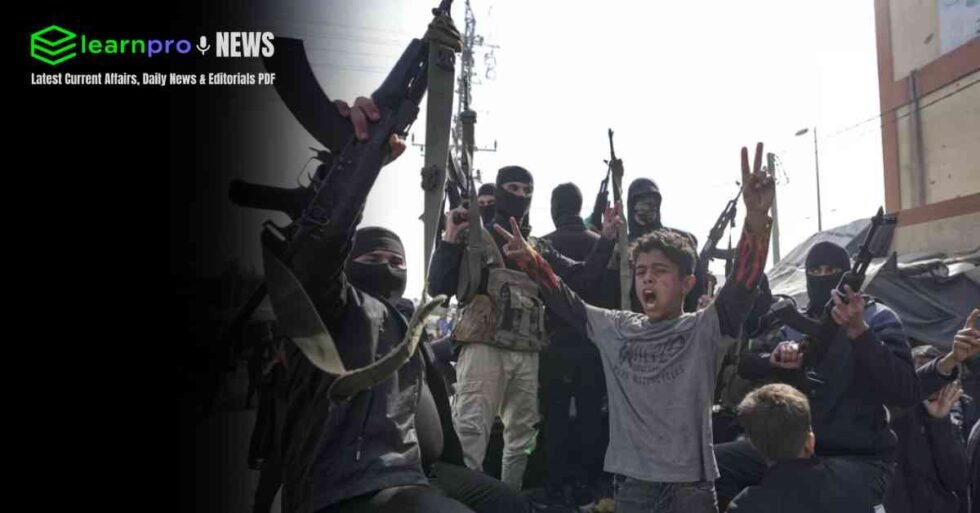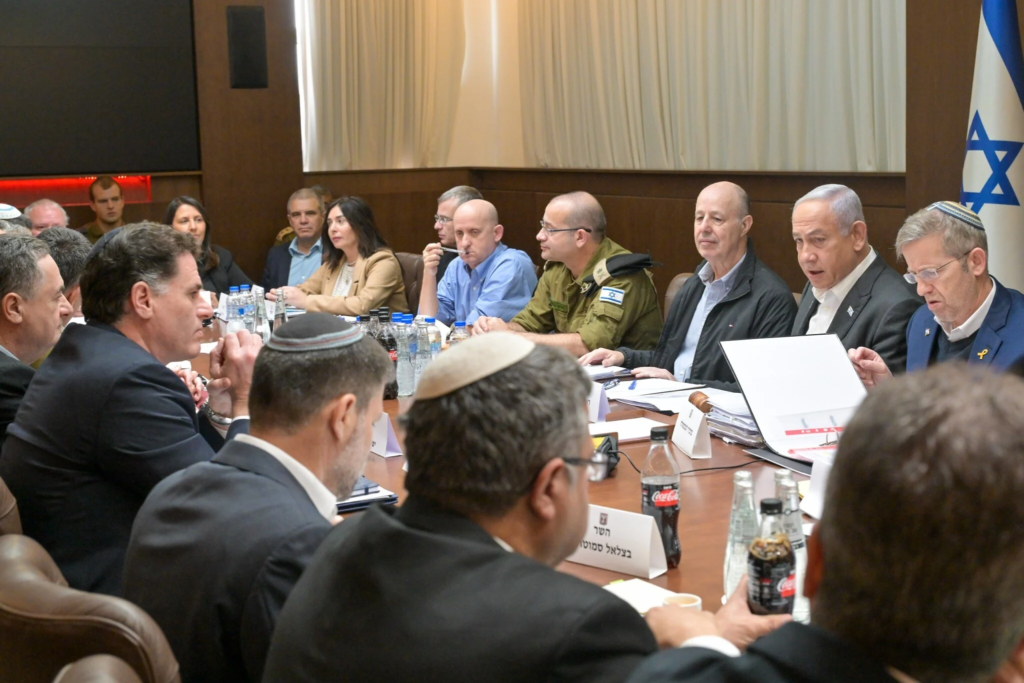
Context and Developments
Israel-Hamas have agreed to a ceasefire mediated by Qatar and the United States, marking a potential pause in a 15-month-long war. This development follows intense negotiations and significant geopolitical maneuvering. Israeli Prime Minister Benjamin Netanyahu confirmed the agreement, which still awaits approval by Israel’s full Cabinet of Ministers.
Current Status
- The ceasefire deal was announced on Wednesday but faced delays as Mr. Netanyahu cited last-minute issues attributed to Hamas.
- Hamas, however, reiterated its commitment to the agreement.
- The ceasefire could start as early as Sunday if approved by Israel’s Cabinet.

Background: How the Conflict Escalated
The conflict erupted on October 7, 2023, when Hamas launched a cross-border attack into Israel, killing 1,200 people and taking 250 hostages. Israel’s response was a massive military offensive in Gaza, resulting in over 46,000 Palestinian deaths, with women and children comprising more than half of the casualties.
Beyond the immediate toll, the war has ignited worldwide protests, strained international relations, and deepened divisions in the already volatile West Asia region.
| The Ceasefire Agreement: Key Highlights The ceasefire agreement, announced on Wednesday, includes: 1) Pause in Hostilities: Both sides are expected to halt attacks. 2) Hostage Release: Hamas will release dozens of hostages held in Gaza. 3) Immediate Start: The truce could begin as early as Sunday, pending approval by Israel’s Cabinet. |
Political Roadblocks in Israel
The ceasefire has drawn fierce opposition from Prime Minister Benjamin Netanyahu’s far-right allies. Their objections threaten to destabilize Israel’s coalition government and raise questions about the agreement’s durability. Despite this, the full Cabinet is likely to approve the deal.
Humanitarian Impact and Escalation
In the lead-up to the ceasefire, violence has escalated. On Thursday alone, Israeli airstrikes killed at least 72 Palestinians. This pattern of intensified attacks before ceasefires has become a hallmark of the conflict, as both sides seek to assert dominance before agreeing to peace.
The humanitarian toll in Gaza is staggering:
- 46,000+ Deaths: According to local health officials, the casualties include thousands of women and children.
- Displacement: Millions of Gazans have been uprooted from their homes.
- Global Protests: Demonstrations against the violence have erupted worldwide, highlighting the international outcry over the conflict.
Diplomatic Mediation: A Crucial Role
Mediators Qatar and the United States played a pivotal role in brokering this deal. Their involvement reflects the growing international pressure on both sides to de-escalate the conflict and pave the way for long-term solutions.
Challenges Ahead
The ceasefire, while a welcome respite, faces numerous challenges:
- Fragile Trust: Both sides have accused each other of bad faith, leading to skepticism about the deal’s sustainability.
- Political Fallout in Israel: The backlash from Netanyahu’s coalition partners could destabilize the government, jeopardizing the ceasefire’s implementation.
- Humanitarian Crisis in Gaza: Addressing the devastation in Gaza will require extensive international support and rebuilding efforts.
Global Implications
The Israel-Hamas conflict has far-reaching consequences for regional stability and global geopolitics. A ceasefire, if successful, could:
- Ease tensions in West Asia.
- Create momentum for broader peace talks.
- Demonstrate the effectiveness of international mediation.
The Way Forward
The Israel-Hamas ceasefire is a critical moment in a conflict marked by immense suffering and destruction. It provides an opportunity for:
- Humanitarian Relief: Immediate aid to the people of Gaza to address their urgent needs.
- Diplomatic Engagement: Renewed efforts by global powers to mediate a lasting resolution.
- Rebuilding Trust: Steps by both sides to honor the agreement and avoid further escalation.
However, achieving lasting peace will require addressing the root causes of the conflict, including territorial disputes, security concerns, and the plight of Palestinian civilians.
Conclusion
The ceasefire between Israel and Hamas is a critical step toward halting the devastating violence that has gripped the region. However, it is fraught with challenges, from political resistance in Israel to the fragile trust between the warring sides. As the world watches, this agreement represents both hope and uncertainty in one of the most enduring conflicts of our time.
Source : The Hindu
Also Read about :
- India’s Foreign Policy: Relations with Neighbors and Strategic Partners
- The Israel-Hamas Conflict 2024: Global Repercussions and Key Insights
- India-China Relations: Recent Developments and Future Prospects
- Sustainable Development Goals (SDGs): A Comprehensive Analysis 2025
- 2030 Agenda for Sustainable Development: A Comprehensive Analysis
Mains Practice Questions:
1. International Relations (GS Paper II)
“The Israel-Hamas ceasefire agreement mediated by Qatar and the United States highlights the importance of third-party diplomacy in conflict resolution.” Discuss the role of international mediation in resolving long-standing conflicts with examples.
2. Governance and Polity (GS Paper II)
“Political stability is essential for effective conflict management and implementation of peace agreements.” Critically analyze how internal political dynamics in Israel could affect the sustainability of the ceasefire with Hamas.
3. Ethics, Integrity, and Aptitude (GS Paper IV)
“Humanitarian considerations and ethical responsibility must take precedence over political and military objectives in conflict zones.” Examine this statement in the context of the Israel-Hamas conflict and the resulting humanitarian crisis in Gaza.
4. World History (Optional/GS Paper I)
“The Israel-Palestine conflict is rooted in historical grievances, territorial disputes, and identity politics.” Analyze the historical factors contributing to the conflict and suggest measures to address the root causes.
5. International Relations (GS Paper II)
“Regional conflicts such as the Israel-Hamas war have global implications, impacting regional stability and international peace.” Evaluate the implications of the recent Israel-Hamas ceasefire on West Asia and global geopolitics.
6. Disaster Management and Internal Security (GS Paper III)
“Prolonged conflicts not only result in humanitarian crises but also undermine regional and global security frameworks.” Discuss the impact of the Israel-Hamas conflict on regional stability and its implications for international security.
7. Indian Perspective (GS Paper II)
“India’s strategic interests in West Asia necessitate a careful balancing act in its diplomatic engagements.” Analyze the challenges and opportunities for India in maintaining neutrality while ensuring its energy and trade security in the context of the Israel-Hamas ceasefire.
8. Economic Repercussions (GS Paper III)
“Conflicts in resource-rich regions such as West Asia have significant economic implications on global energy markets.” Examine the economic impact of the Israel-Hamas conflict on global oil prices and trade routes.






